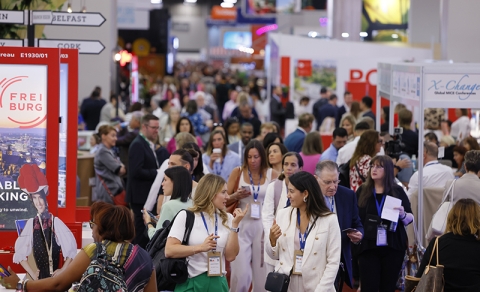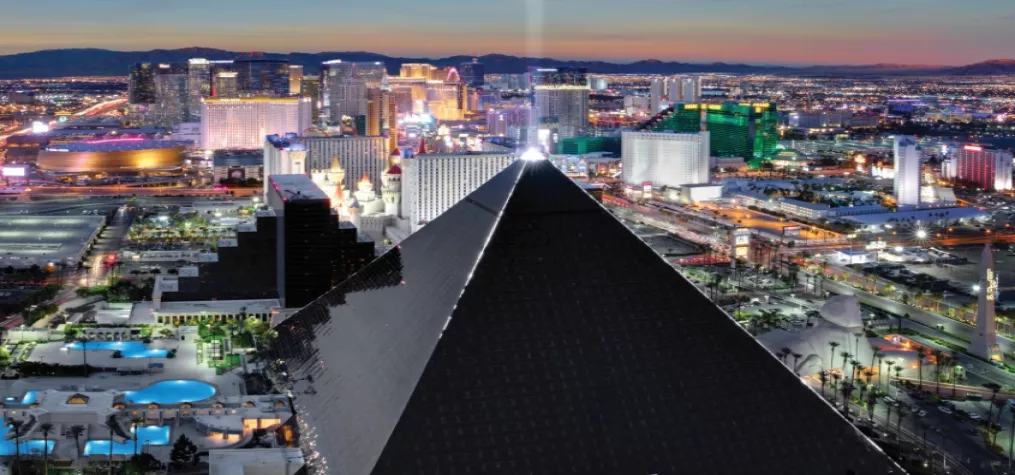What’s Hot vs. Not in Trade Shows Today

The International Association of Exhibitions and Events (IAEE)—the largest association for the industry, representing more than 12,000 professionals—recently released the latest edition of its landmark “The Art of the Show” textbook.
Unveiled in March, it marks the sixth edition of the text, and the first to be published in nearly four years. It’s safe to say a lot has changed in trade show trends in that time, and “the latest textbook highlights the increasing complexity of events and the genuine need to understand our audiences,” according to Rich Vallaster, the director of industry relations and community engagement at Personify—and one of 50 industry experts who contributed to the text’s 30 chapters.
Vallaster told TSNN that “the pace of change” is the most significant shift in the trade show landscape. Just think of the "evolution and significance of sustainability, research, data, technology, risk, and security” alone, Vallaster challenged. Gone are the days of “a familiar ‘rinse-and-repeat' approach [to putting on a trade show’ that has worked in the past.” Here’s what booth layouts, designs, exhibits, and more are buzzing at trade shows today—plus what’s totally bust.
What’s Hot
Smaller, High-Impact Booths
“Smaller, modular, high-impact booths are absolutely trending,” Vallaster said, noting that he’s seen exhibitors and sponsors buying up smaller booths in multiple areas of a trade show floor to increase the likelihood of engagement. “It’s all about flexibility and being able to scale presence without losing brand impact.”
Speaking of impact, achieve it by prioritizing the customer journey, Vallaster recommended. “I’ve been struck by how challenging it can be for attendees to navigate, understand, or even register for some events, even as someone who does it daily," he said, adding that, “too often we, as event organizers, focus on what we like rather than our end users.”
Creating Events Within an Event
Creativity is not slapping colorful LED lighting onto a booth or some interactive technology that merely looks cool, said Vallaster, who’s also an IAEE board member. Rather, real creativity comes from “creating an event within an event,” he added. “This can include offering mini-educational sessions with industry leaders, hands-on opportunities and product demos, unique experiences, or even fun activities—as long as it welcomes and engages prospects by delivering a memorable message.”
Blurring the Lines Between Show Floor and Education
For large trade show organizers, an impressive lineup of speakers has become a popular way of drawing attendees. The latest CES in January, for instance, substantially increased its educational offerings to feature more than 12,000 speakers across 300 conference sessions. In contrast, CES 2024 featured a mere 1,000 speakers.

Per Vallaster’s research, leaning into educational sessions is effective when it’s “intentional.”
“Event organizers too often treat education and exhibits as separate entities with conflicting objectives and timelines,” he explained. “For success, education and exhibit teams must work together. The more we blur the lines between the show floor and with educational elements, the more attendees will perceive the entire event—and every space within it—as a learning opportunity.”
Vallaster pointed to one exhibitor at the American Society of Landscape Architects Annual Conference that “created a dog agility park to demonstrate their equipment with real dogs” as a great example of this line blurring in action. The booth saw so much success that “show management has since expanded the agility park into a full-fledged dog park, featuring multiple non-competing exhibitors that showcase products and services essential for a traditional dog park, such as waste bags, turf, and more.”
“It’s engaging and exciting for attendees—after all, who doesn't love dogs? More importantly, it generates additional revenue for the floor space and attracts more exhibitors to this area on the show floor,” Vallaster said.
An Omnichannel Approach to Marketing
“It may seem that a small, 10-by-10-foot booth would have little chance of generating as many lead scans as the larger anchor booths with bigger marketing budgets,” Vallaster said. It’s not true—but only if exhibitors “market their booth before the event, actively maintain an online presence, [and] invest in clear messaging.”
The same is true of an omnichannel marketing strategy, so just think of your company’s presence at a trade show as part of that customer-centric, multimedium marketing approach, Vallaster offered. Assets aren’t the only thing that relay messaging: “A cohesive narrative should also extend to booth staffing,” Vallaster said, advising marketing and sales teams to be aligned ahead of getting to the trade show floor.
What’s Not
Participating Because of Tradition
“Attending ‘just because’ or participating simply because of tradition is no longer acceptable,” Vallaster said, noting the importance of exhibitors articulating value to their booth visitors now more than ever. “If event organizers cannot deliver on expectations for each of their audiences, they will struggle to maintain relevance.” With that, it should come as no surprise that exhibitors can also skip the following, according to Vallaster and IAEE’s latest textbook:
- poor booth messaging
- generic swag
- absent booth staff
- ...and a tired bowl of candy.
To Vallaster, all of these pitfalls can be avoided with proper marketing (see above).
Pitches During Educational Sessions
Sales pitches from vendors have no place being disguised as “education,” Vallaster said. “If it's a pitch, it should be clearly identified as such.” Organizers owe it to attendees—and the vendors, who "are likely to also feel disappointed in the outcome”—by letting them know when to expect a sales pitch.
By allowing vendors to offer a pitch over a true education session, trade show organizers are also “failing to leverage [the] valuable insights and expertise” these professionals have in their respective fields.
The most effective and creative use of vendors’ knowledge Vallaster has seen: "Carefully curated show floor tours with 15-minute mini-sessions (not pitches) in exhibitors booths.”
Cheap Pens and Stress Balls
Engagement is evolving—and the amount of cheap, branded pens and stress balls that end up in the garbage are a testament to that. “It’s just junk,” Vallaster said. And as younger attendees enter the industry, this type of swag does nothing to appeal to their priorities, which everyone knows includes sustainability.
Vallaster said that Personify has found success with “limited edition socks each year [that] people wear to our booth.” It’s because “they are practical and useable,” he said.
Lack of Booth Staff Training
It's a shame to see trade shows taking up so much marketing spend—and yet companies will miss goals because they overlook the importance of preparing their front-line staff, Vallaster said.
"To address these challenges even with our own exhibiting, we have implemented a ‘Trade Show Boot Camp’ for our booth staff,” Vallaster shared. “Regardless of their experience level, we provide training before each event to clarify expectations, teach engagement techniques, and more, ensuring that we maximize our own investment in events.”
IAEE did not respond to TSNN’s request for comment.
Don’t miss any event-related news: Sign up for our weekly e-newsletter HERE, listen to our latest podcast HERE and engage with us on LinkedIn!


Add new comment